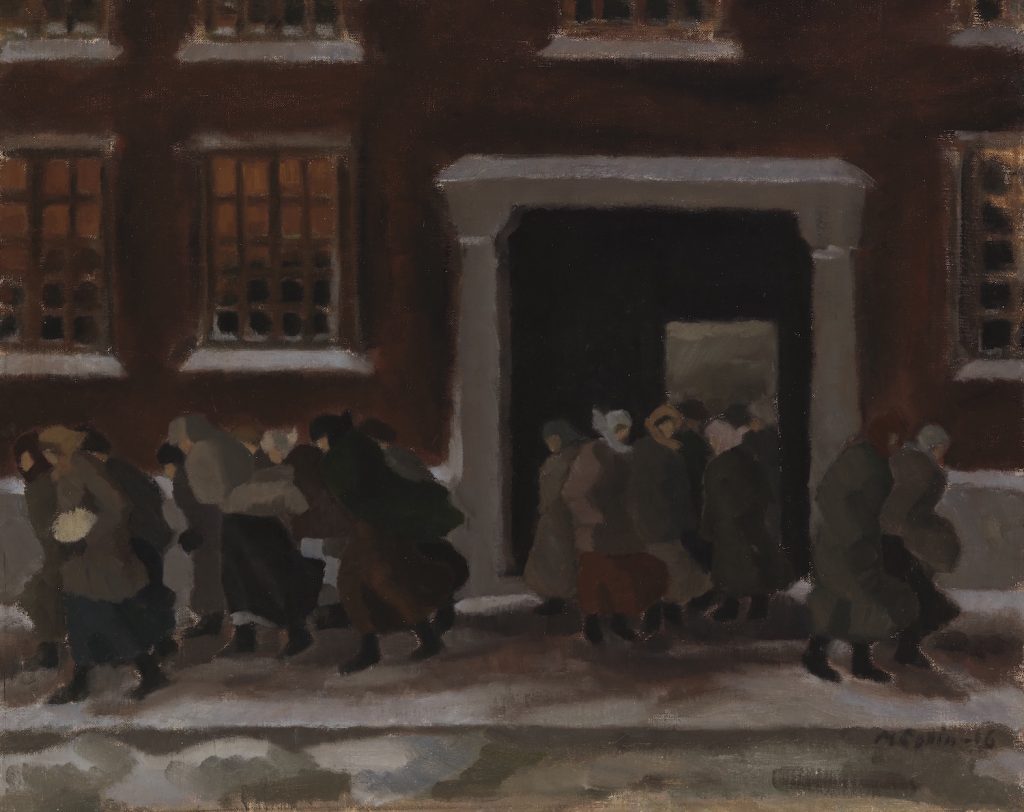Marcus Collin – Factory Girls, 1916
Artist Marcus Collin (1882–1966) drew the last brushstrokes for his painting Factory Girls in 1916, a hundred years ago. Characteristic for the period was that Finland was still a part of the vast Russian Empire as its western province whose autonomy was threatened by russification campaigns and intensified oppression.
World war raged in Europe but for Finland, the biggest upheavals were only just on the way. Our country declared its independency in December 1917, and quite soon after that a cruel civil war broke out and divided the nation in two. The mill owners and workers ended up in opposite camps for a long time.
The year 1916 saw economic revival. The amount of people living in townships was increasing while the amount of jobs in the rural areas was diminishing. The factories needed more workers. Especially in the textile industry, printing houses and match factories, the demand for young women as work force was high. Equal pay for the women was not required. Roughly speaking, the men’s wages started on the level, which women’s wages could reach. Child labour was used even though it was also somewhat disapproved. As late as in the early 19th century child labour was quite common in Finland.
However, access to factory work opened a possibility for women to earn a better income than working in the service occupation or as a maid in the countryside. It also brought new kinds of liberties. Women could choose not to get married which was not a matter they could decide themselves in an agricultural society of that time. Farmers possessed the guardianship of their daughters until they were married, at which time the guardianship was transferred to the husband. In Finland, married women gained their full rights as a citizens as late as in the 1930s.
In the early 20th century the workload increased in the factories. Control became stricter and demands increased. On the other had, regulations on working hours and breaks within the workday were being introduced. Now the requirements to change over to an 8-hour workday grew whereas about twenty years earlier people had been working even 12-hour shifts. It was implemented by laying down the parliamentary law on the 14 July in 1917. A young nation tried to take care of its factory workers also otherwise better than before. It was regulated in the law, among other things, that ” a child or a young woman cannot be employed in heavy carrying, loading or unloading work in the construction business nor to clean or grease a machine or power transfer machine that is operating”.
Unlike other Finnish artists of the November Group who were mostly expressionists and cubists intensifying their activity, Marcus Collin used to have a dynamic touch in depicting people in the current of life, people on the streets, in harbours and people working hard in the forest, people sitting in pubs as well as workers hurrying to their work in factories. These kinds of paintings were quite rare in Finnish art of 1910s.
In his artworks depicting everyday life, Collin’s compassion is on the side of the ordinary people even though he had good relations also with the management of the factories. Gösta Serlachius was befriended with the artist when he acquired the painting Factory Girls for his art collection in 1929. Serlachius collected Collin’s paintings particularly in the 1930s and 1940s, and the artist was commissioned with the paintings depicting forest work. They were hung in the premises of the company. Marcus Collin was also invited to join the board of directors of the Gösta Serlachius Fine Arts Foundation where he as a member had an eminent influence on art field for the rest of his life.
Tarja Talvitie
Head of Collections


